Denim is one of the most common fabrics in the world, found in closets across all cultures and age groups. But when jeans wear out or go out of style, they often end up in landfills. Some are donated for recycling, but much of it still goes to waste. With its strength and durability, denim deserves a second life. A new wave of eco-conscious designers is challenging this fate, proving that denim’s durability and texture can live on in more stylish and unexpected ways—far beyond fashion.
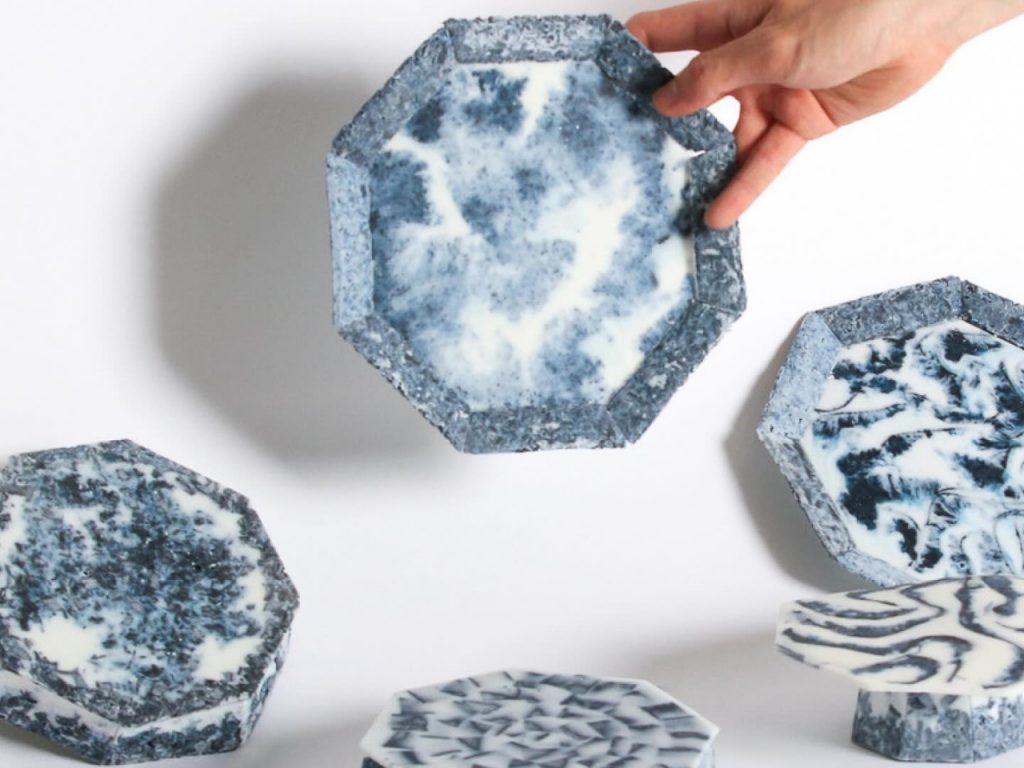

The Denim Project by Junghyun Kim (also header image)
South Korean designer Junghyun Kim developed The Denim Project to explore new ways of extending the life of denim. Instead of letting worn-out jeans go to waste, Kim collects discarded denim and repurposes it into handmade home décor. The process involves bundling and grinding the fabric, then mixing it with binding materials like wood glue, plaster, and resin. The result is a solid, versatile material that can be shaped into functional objects.
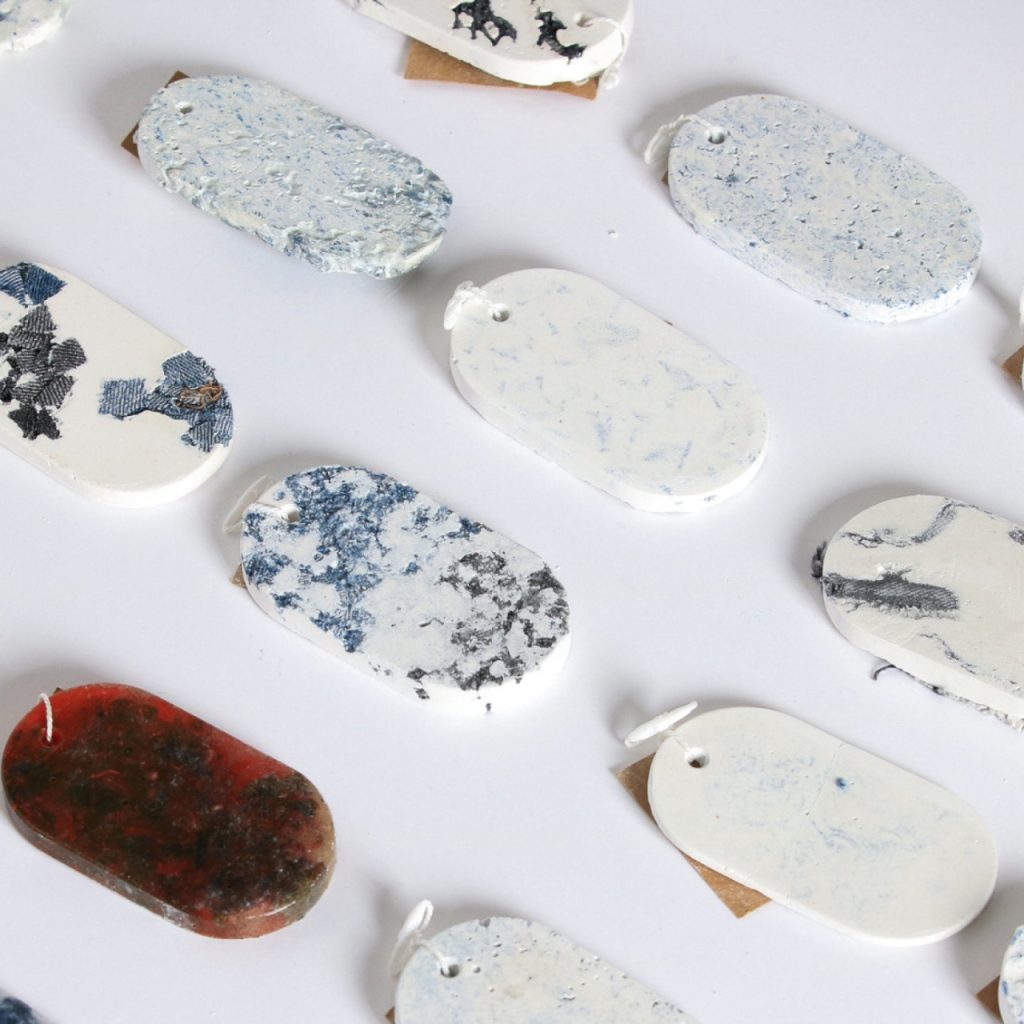
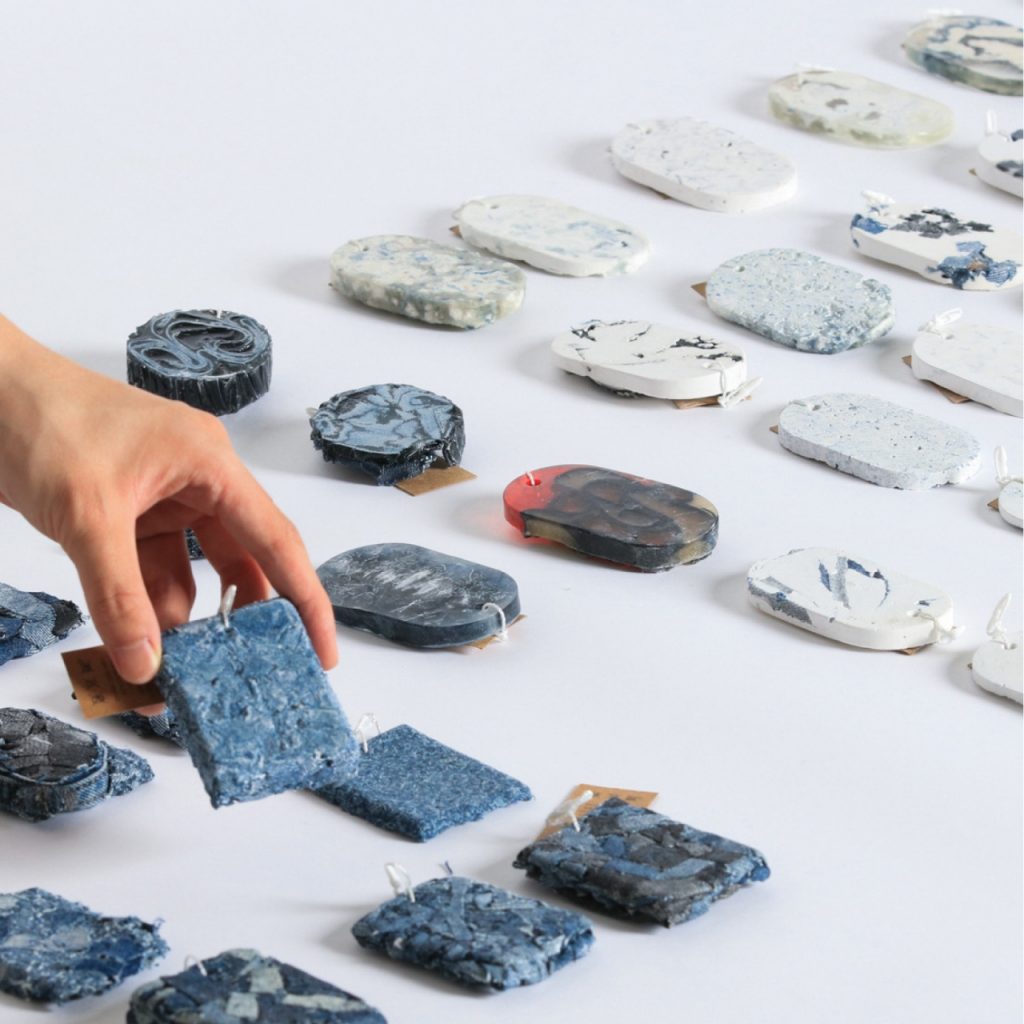
The Denim Project by Junghyun Kim
The project’s main output is a collection of decorative plates. These are more than just visual pieces—they’re durable enough for everyday use, though many choose to display them as home accents. The plates are mostly blue and white, drawing on the natural color of denim and evoking classic patterns found in traditional Japanese art, such as Hokusai’s The Great Wave off Kanagawa. The collection includes hexagonal trays and coaster-sized versions that come with stands for easy display.

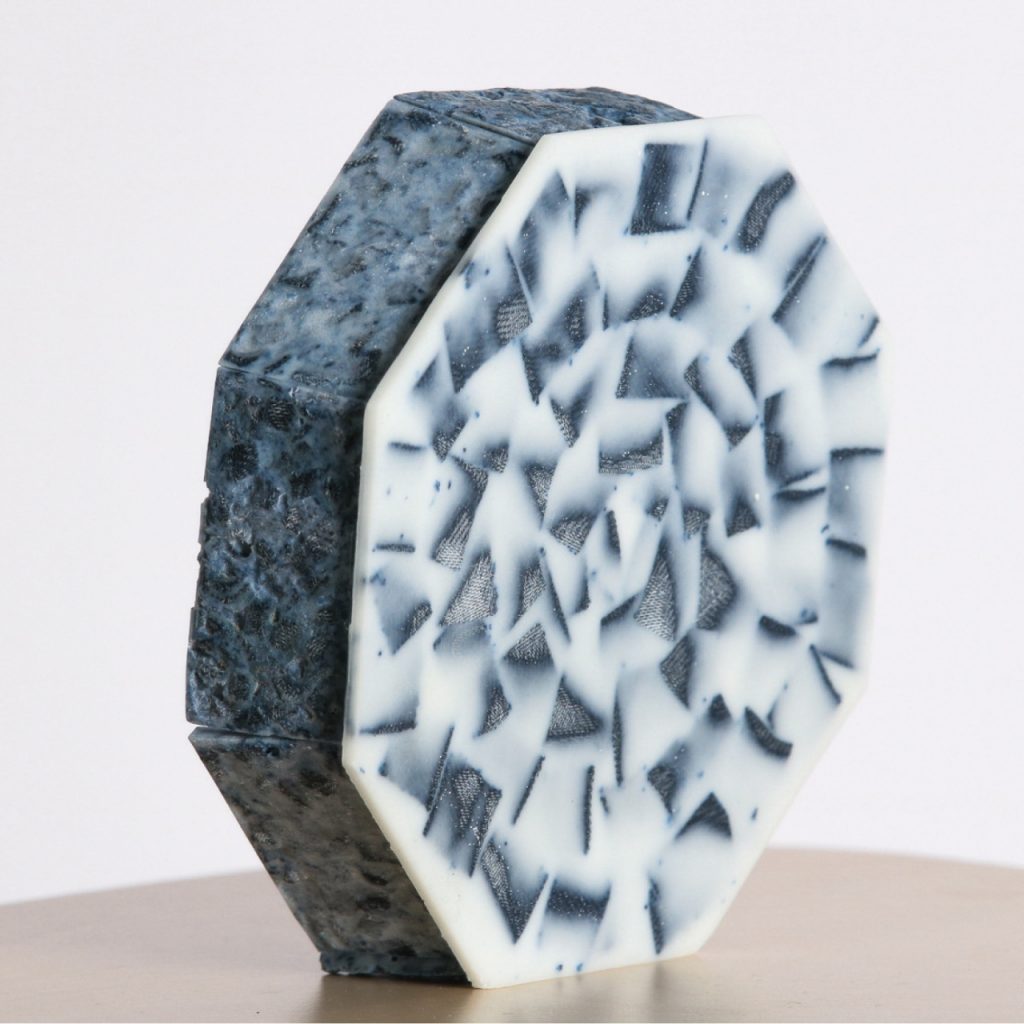
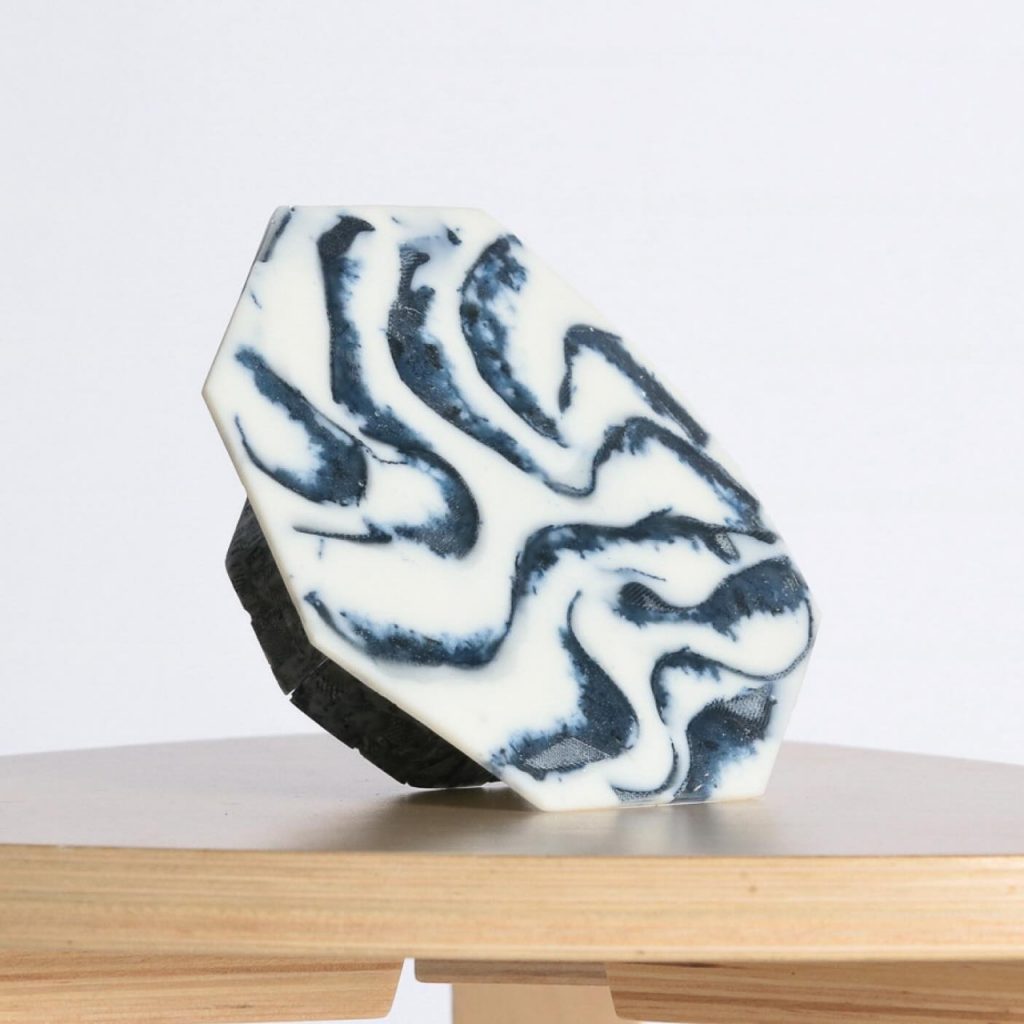
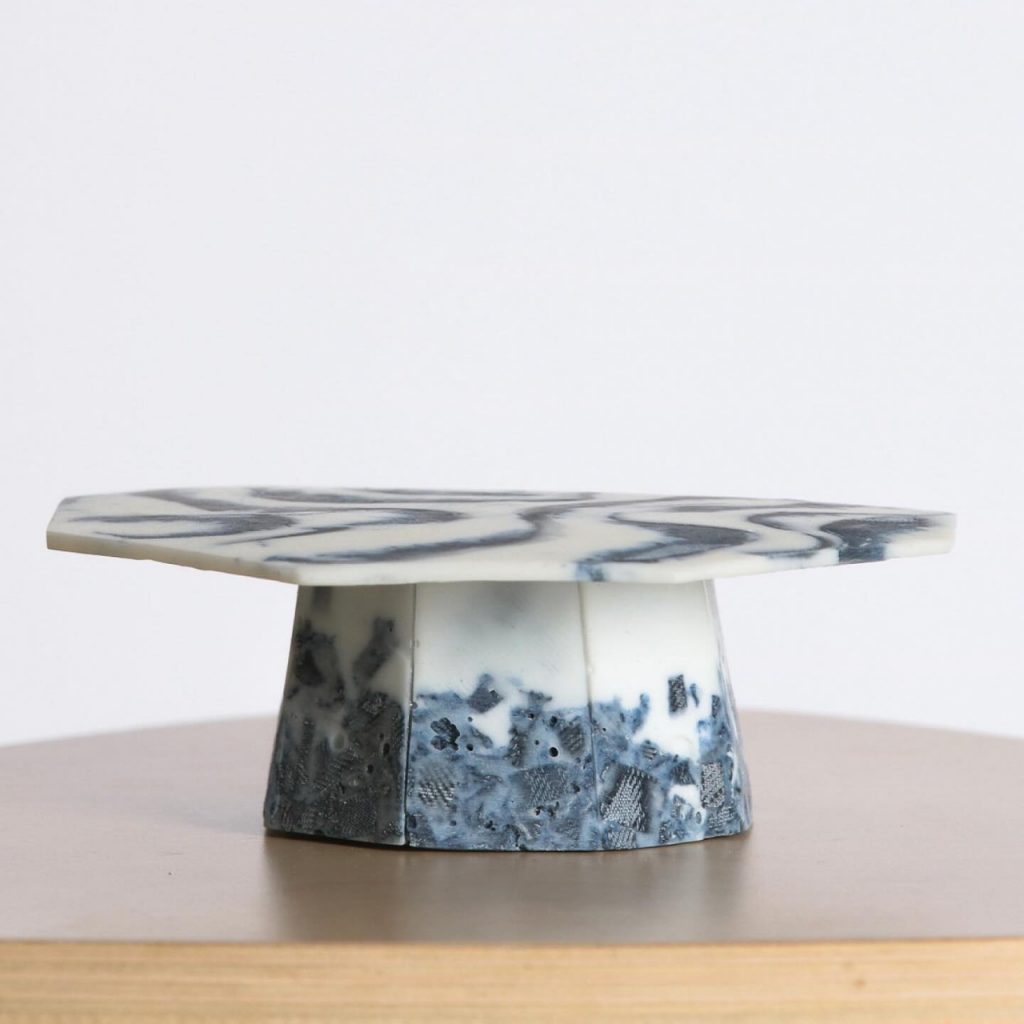
The Denim Project by Junghyun Kim
By focusing on form and texture, Kim highlights the unique qualities of recycled denim while reducing textile waste. Even if the plates are broken, the materials can be reused again, creating a closed-loop design system. This approach not only diverts waste from landfills but also encourages people to see value in materials often considered disposable.

Denim furniture by Harry Nuriev
Based between Paris and New York, designer Harry Nuriev reimagines denim as a material for building a new kind of home—one that reflects how people actually live today. In his latest furniture collection, denim becomes a skin for modular, multifunctional pieces that blend comfort, utility, and personal expression. From a massive sofa with integrated tables and device holders to gym benches and even dumbbells, each item challenges conventional furniture norms while embracing the everyday familiarity of denim.
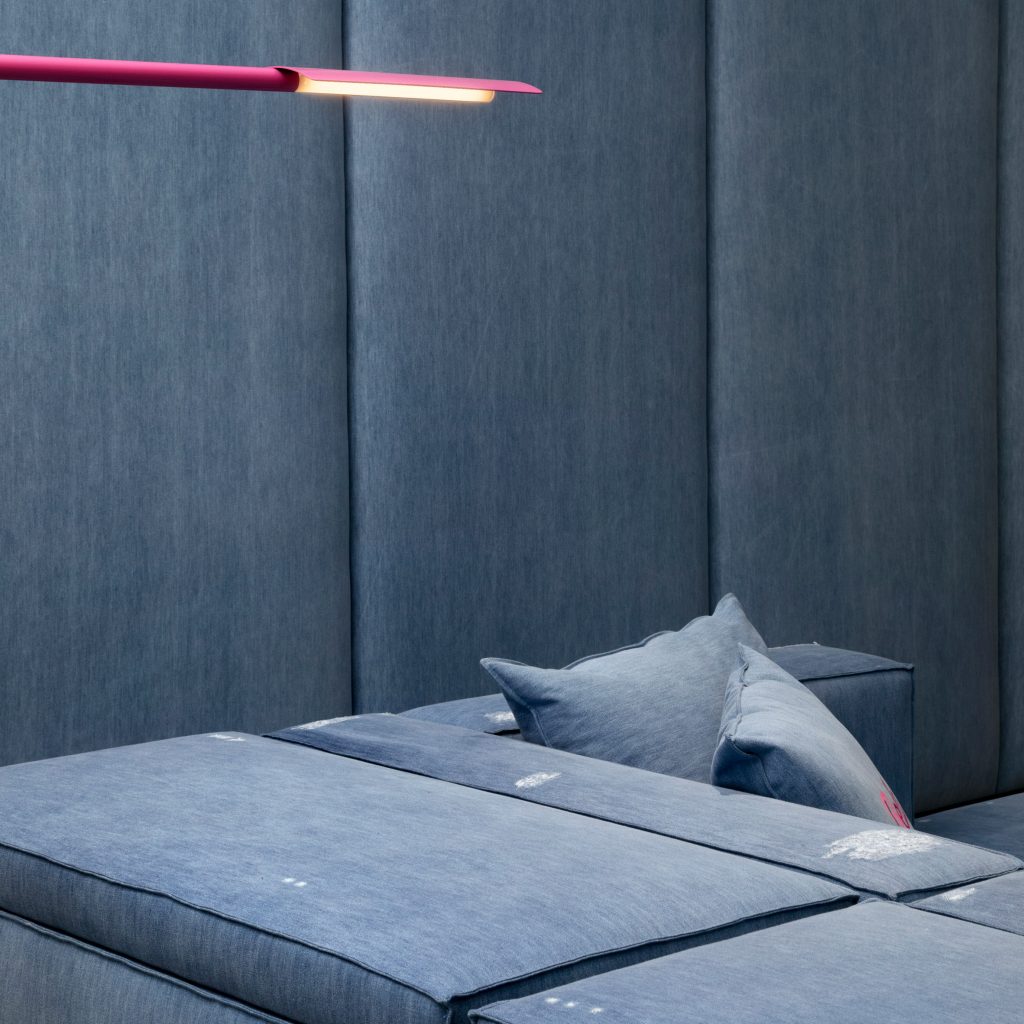
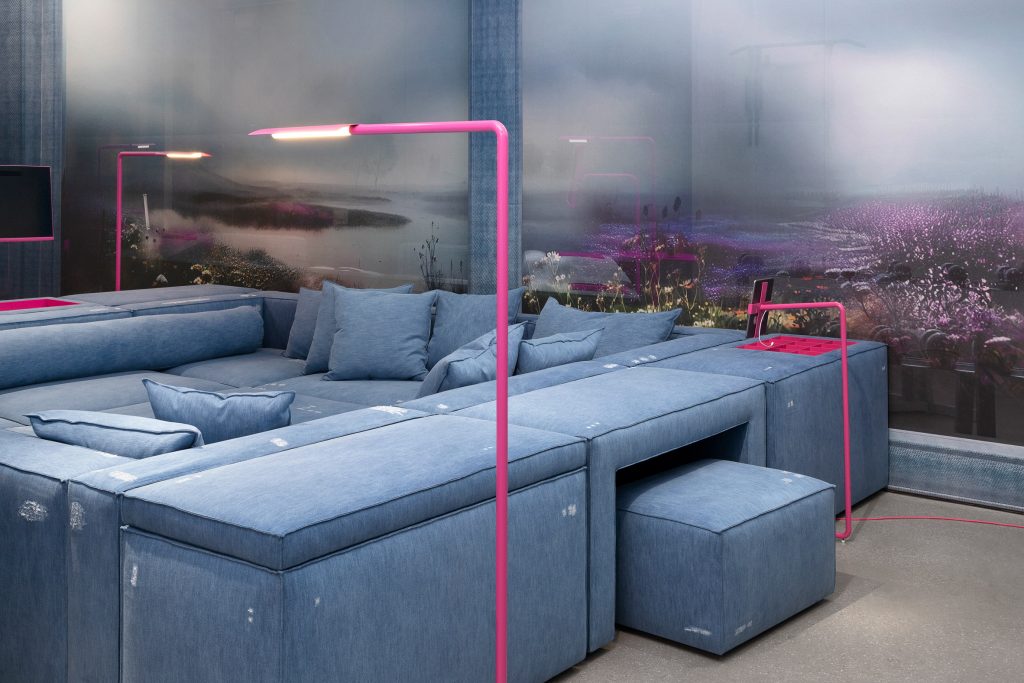
Denim furniture by Harry Nuriev
At the center of the collection is a sprawling sofa that doubles as a workspace, entertainment zone, and rest area. Its oversized proportions and layered components echo the way we wear clothes—mixing and matching pieces to suit different needs. Built-in shelves and monitor stands make it possible to live entirely from the sofa, an idea that speaks directly to post-pandemic habits and the growing demand for flexible living solutions.
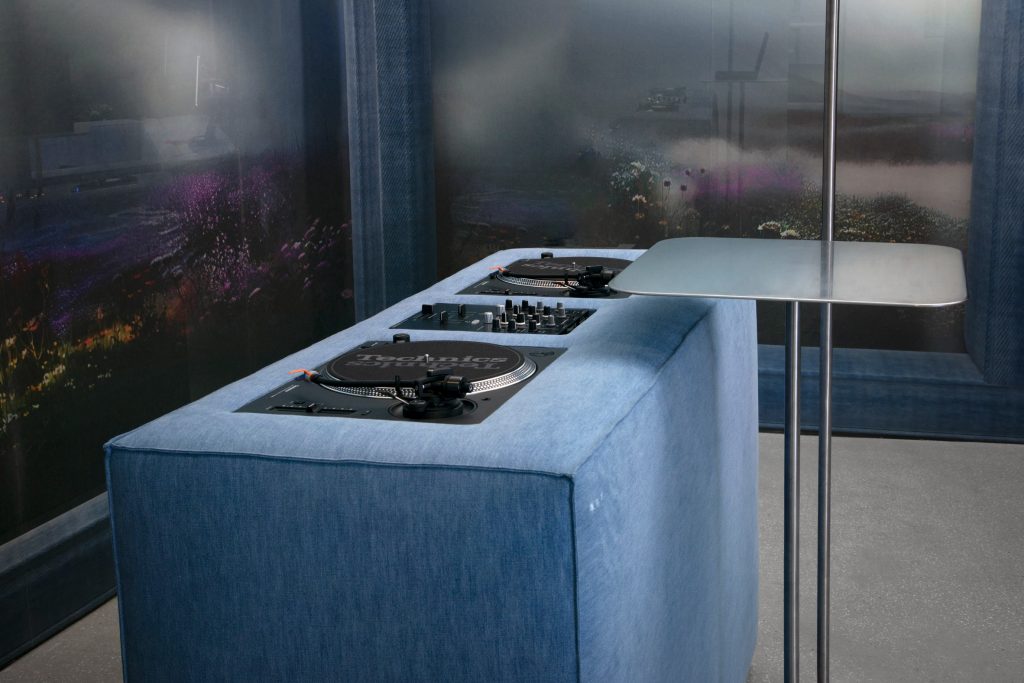
Denim furniture by Harry Nuriev
The rest of the collection follows this logic. Denim wraps around cubed dining stools, wall-mounted storage pockets, and even a DJ booth—each designed to support a home environment that is fluid and adaptable. These pieces aren’t just furniture; they’re lifestyle tools meant to evolve with their users. The choice of denim brings in a sense of warmth and softness, while also signaling durability and everyday wear.
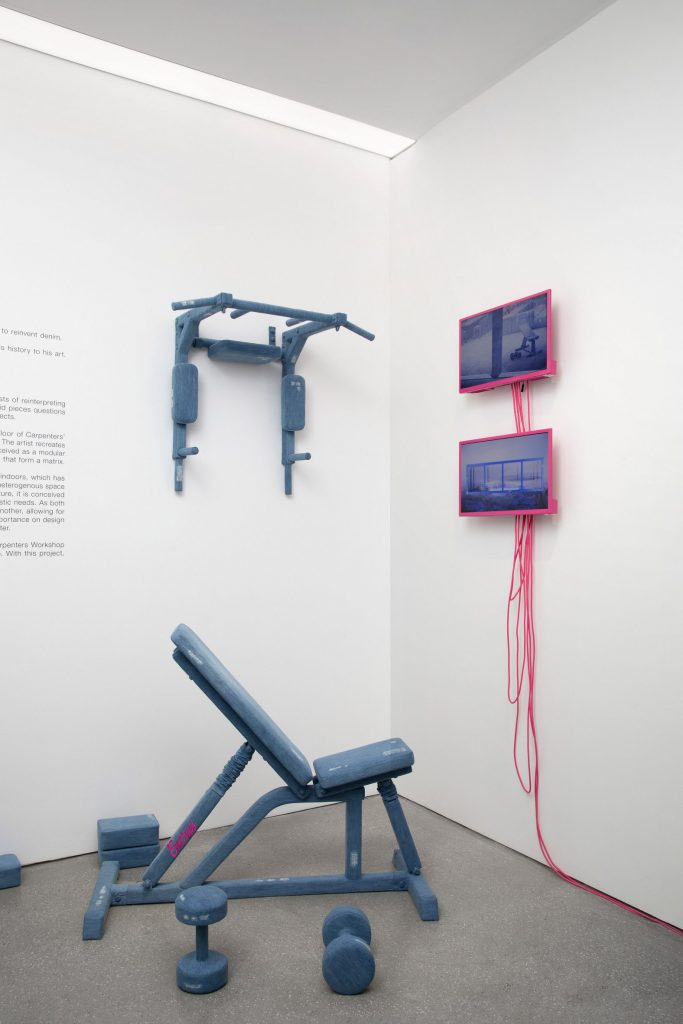
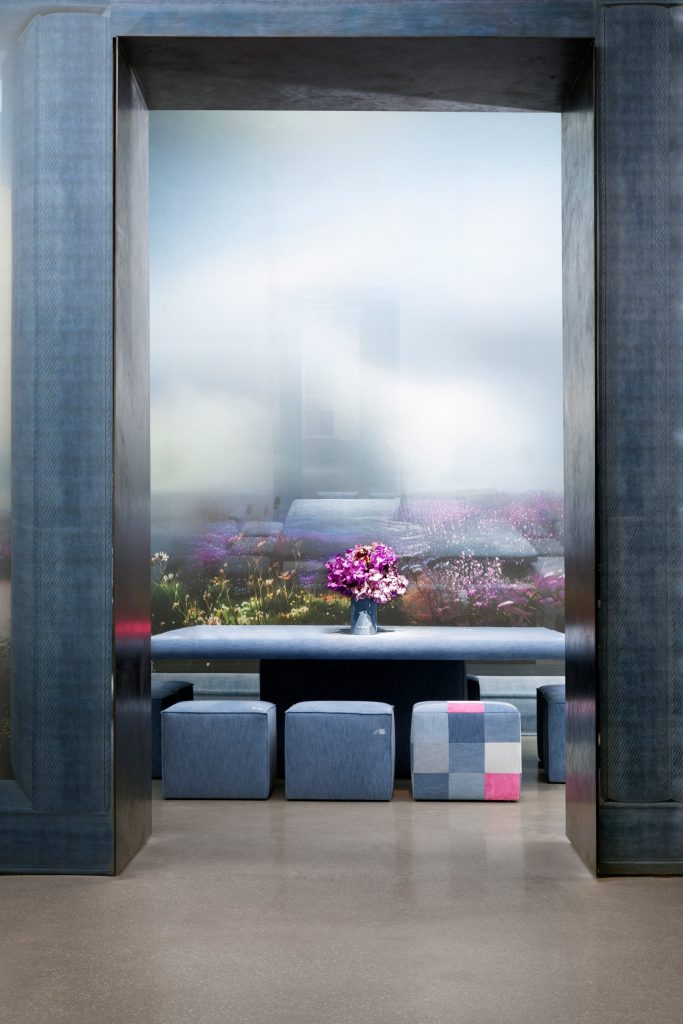
Denim furniture by Harry Nuriev
Nuriev’s approach reflects a broader philosophy he calls “transformism”—the act of bringing materials from one world, like fashion, into another, like furniture. Denim, with its deep cultural roots and global recognition, becomes both a statement and a solution. It allows furniture to feel lived-in, customizable, and deeply personal—just like your favorite pair of jeans.
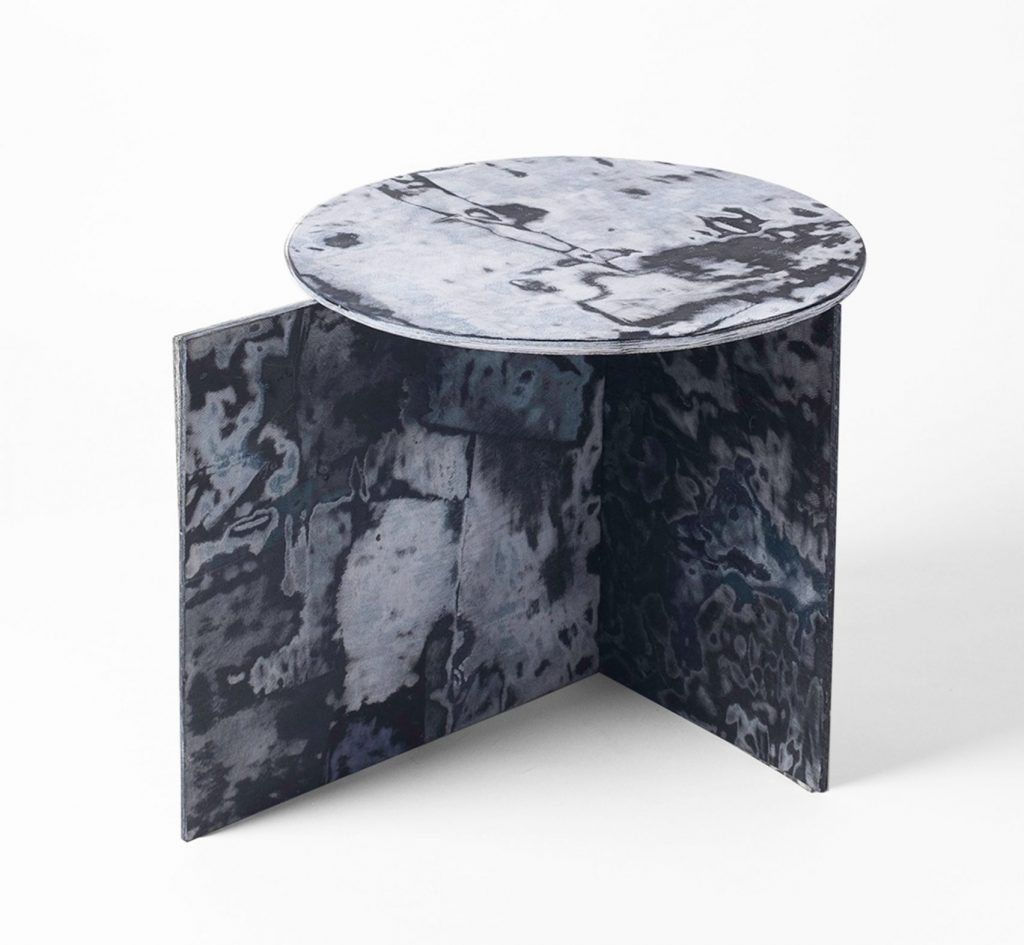
Bahia Denim by Sophie Rowley
New Zealand-born designer Sophie Rowley has developed a unique material called Bahia Denim, which transforms discarded denim into marble-like furniture. By collecting post-consumer denim offcuts from fashion waste and households, Rowley repurposes what would otherwise be trash into visually striking and functional design pieces. Her work reflects an artistic and sustainable approach to design, emphasizing reuse and reinvention.
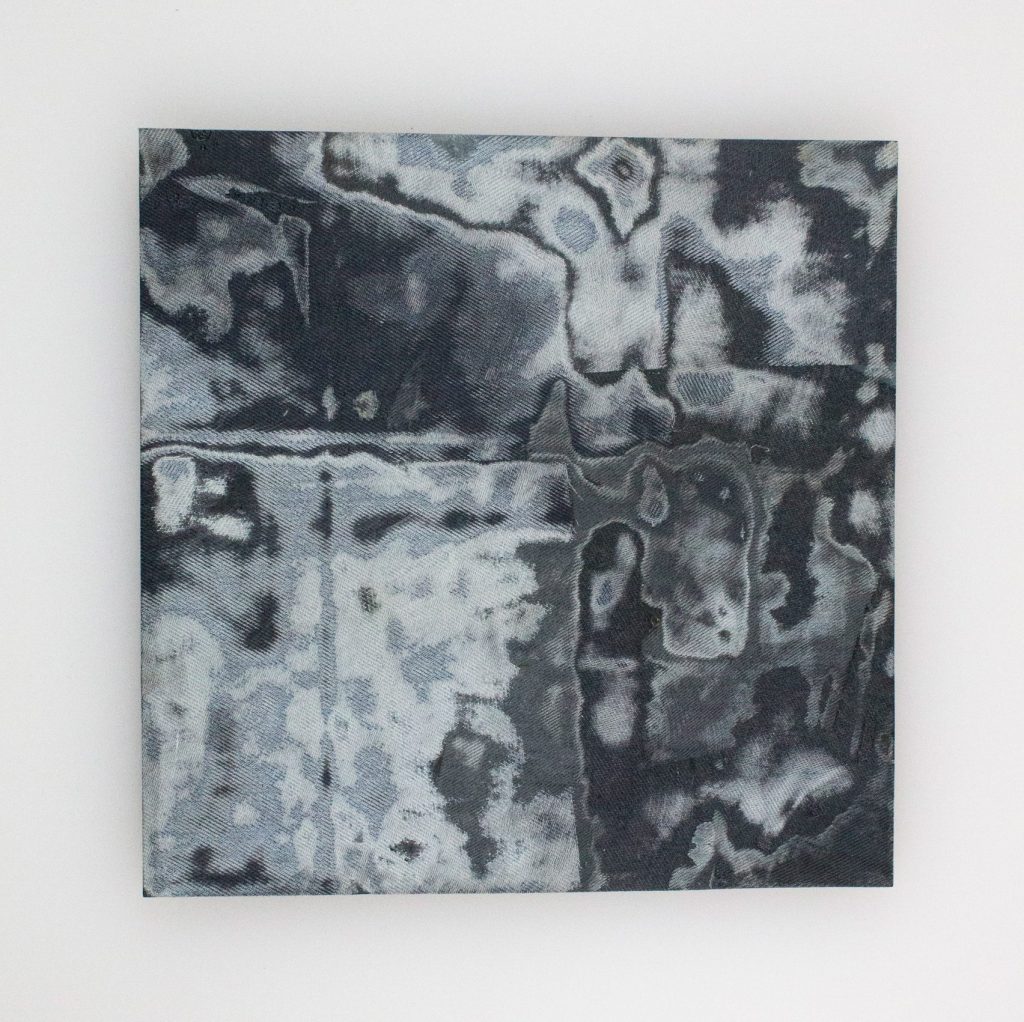

Bahia Denim by Sophie Rowley
To create the Bahia Denim material, Rowley layers denim fragments and binds them with resin, forming solid blocks that she then carves into playful furniture shapes. The resulting patterns resemble natural marble, particularly the Brazilian Azul Bahia stone, with swirling blue hues and organic textures. Each piece is distinct due to the variability of the denim scraps used, making every creation one-of-a-kind.
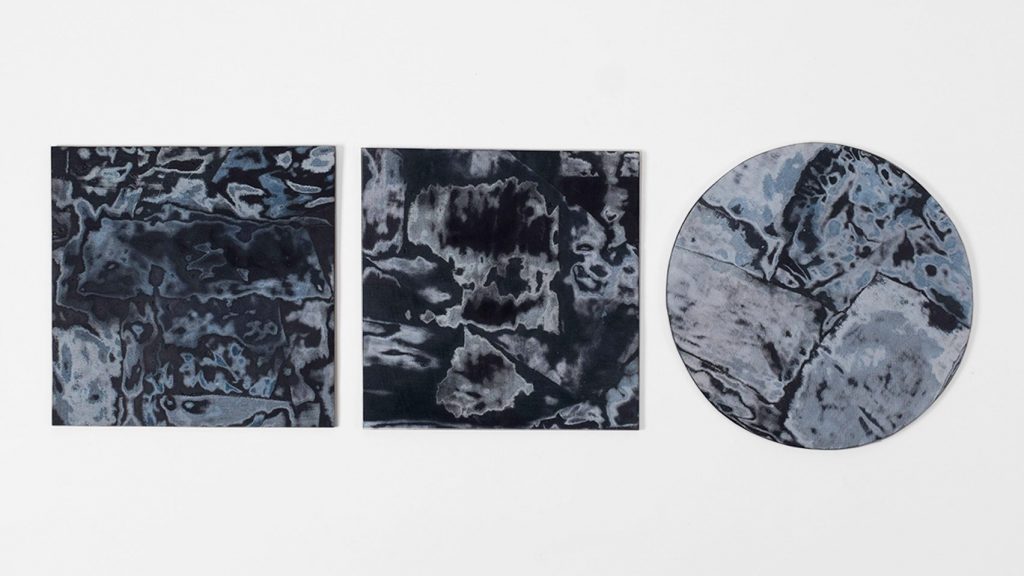
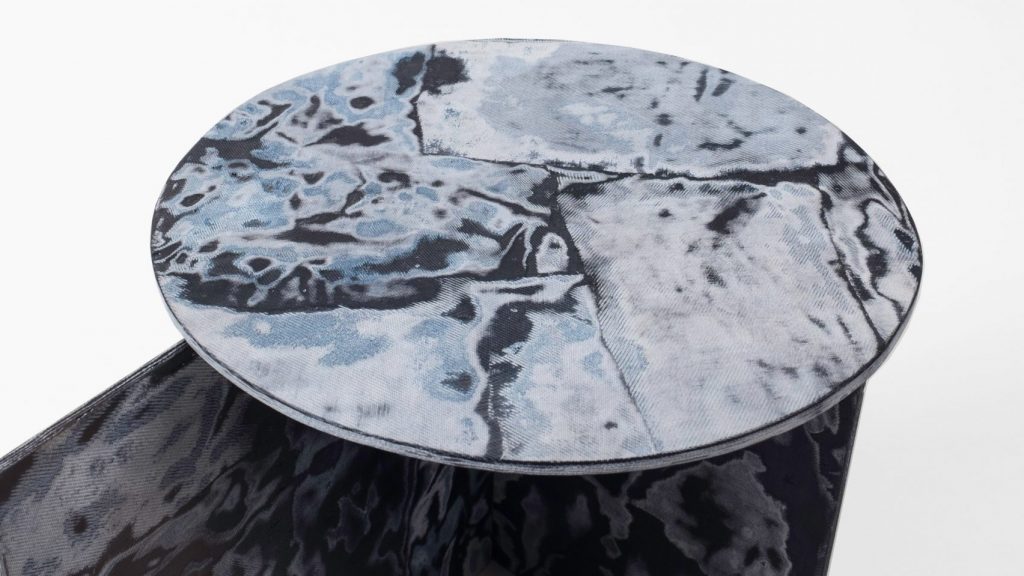
Bahia Denim by Sophie Rowley
The lightweight but durable nature of the material makes it suitable not only for furniture but also for wall panels and other interior applications. Rowley’s process mimics the formation of sedimentary rock, inspired by how broken elements fuse over time in nature. This geological reference adds depth to her method, blending industrial processes with craftsmanship to create a product that is both beautiful and ecologically conscious.